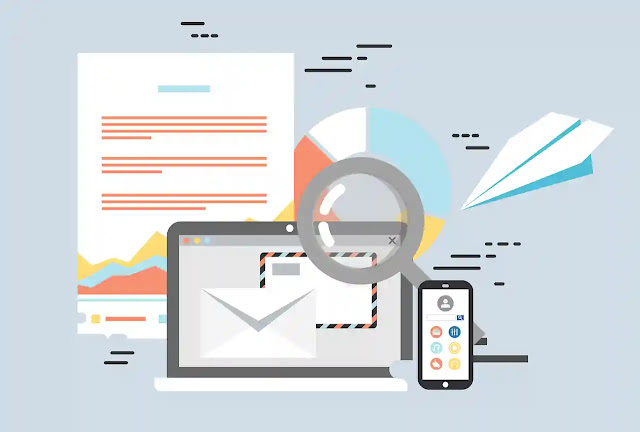Hey, guys this post about what the difference between the Local Mail and Outbound Mail Delivery in the SMTP hope you enjoy the post.
 |
| The SMTP Protocol (Local Mail and Outbound Mail Delivery) |
Local Mail Delivery
SMTP or Simple Mail Transfer Protocol is another protocol you are definitely looking for.
As a web developer after your web application is developed.
You will need to communicate with your customers through email management and set up can be quite special when your email Has listed In thousands of subscribers.
There are many options available when configuring email clients in servers.
It's important to thoroughly understand the email exchange process before diving into this complex intricate area of development.
SMTP is the standard protocol for electronic mail or e-mail transmission.
Let's explore the chain of events that occur when you send an email from your favorite e-mail service provider to your intended recipient.
It's important to note that there are two types of e-mail exchange scenarios.
First, the sender and receiver are exchanging emails or originating from the same domain.
So for example Jane at Gmail dot com is sending an email to Joe at Gmail dot com.
That is known as the local mail delivery in the second scenario.
The sender's domain is different from that of the recipient.
For example, Jane, a g-mail dot com, is emailing Bob at yahoo.com.
In this case, email is transmitted over an external network or outside a local network.
That Is Depends on the type of email exchange And the delivery path will be quite different.
We'll start with local mail delivery.
In this case, the sender sends the email from his or her workstation either through a web-based mail
service or from a locally installed e-mail client such as Microsoft Outlook either way.
The email is sent to an outgoing SMTP server that resides on the email provider's server.
In this case Gmail The server has a variety of tasks it checks the data packets for header information
As you may remember, a packet contains the header information to the sender and receiver of the package.
the SMTP server will determine this email is intended for local mail delivery because the originating
email domain Jane a Jamail dot com is the same as the recipient.
Joe at gmail.com.
And This Is Done When It separates the first part of the email from the email extension and comparing the results
the SMTP server would easily determine that they are both Gmail accounts.
In this case, the gmails outgoing SMTP server would hold the emails internally in the email stored.
This is until joão connects to the server and downloads the mail waiting for him the emails are downloaded
using the pop3 this protocol is responsible for transmitting stored Email messages to the designated recipient.
pop 3 servers typically required authentication for username and password to connect and download
the email messages in storage.
If Joe is using the email of the client and downloads
the messages from a pop3 server,
the messages are moved from Joe's computer and server.
pop 3 server not ideal for recipients who may usees multiple computers to download their email messages.
Some businesses opt to use an app server to handle email storage instead of pop 3 with IMAP email messages
Recipients' emails remain on the server even after they are downloaded by the client.
Outbound Mail Delivery
Let's examine the second scenario.
A more complex situation arises when the recipient's email server is located outside the local network
so the sender in this example is Jane a G.M. dot com and the recipient is Bob at yahoo dot com.
In this case, the A.P. server needs to locate the recipient's email server.
You might recall that when we discussed the HTTP protocol your web browser communicated with the DNS
the server of your ISP to locate the IP address of the webserver hosting the Web site you wanted to view
when Your Email sending an external email message something very similar happens.
Your SMTP server will look at the extension of the recipient's address in this case yahoo dot com.
It will then communicate with the ISP DNS server to locate the IP address of the yahoo dot coms mail server.
Remember the IP address identifies the location of the destination server which in this case is yahoo.com.
Once we have the destination IP address the SMP server will connect with the destination email server.
At this time the destination server will run a variety of spam filters to ensure the message is not junk mail.
Once it's determined that the message is safe redelivery the destination server will keep the message in Joe's email store until Joe connects to his email provider's email server and downloads the message using either pop or Aima.
Also read:-
How Internetwork with (HTTP & HTTPS) anyqanda.blogspot.com
How internetwork with Protocols (internet overview) anyqanda.blogspot.com
Web development full introduction in an easy way anyqanda.blogspot.com
#TAGS:- SMTP, Local Mail, Outbound Mail, Local Mail, and Outbound Mail Delivery,








0 Comments